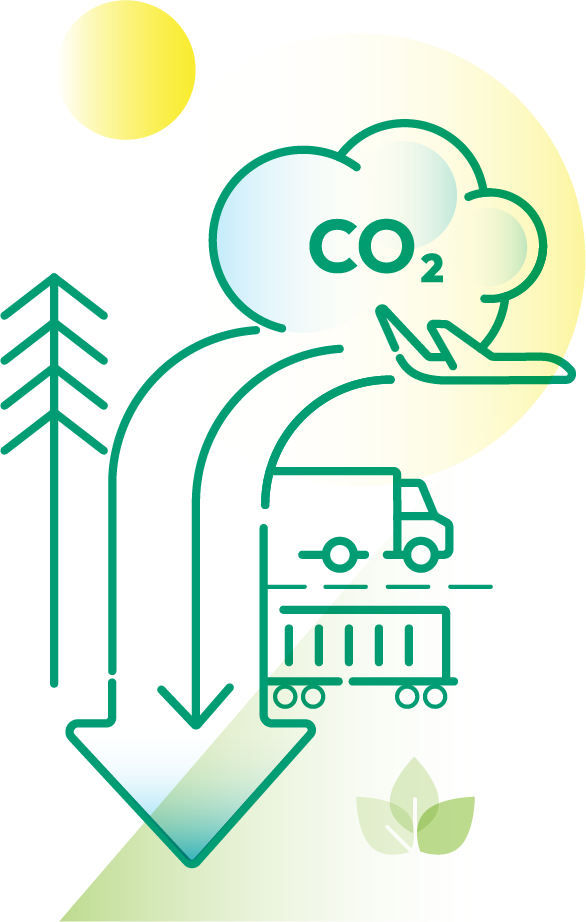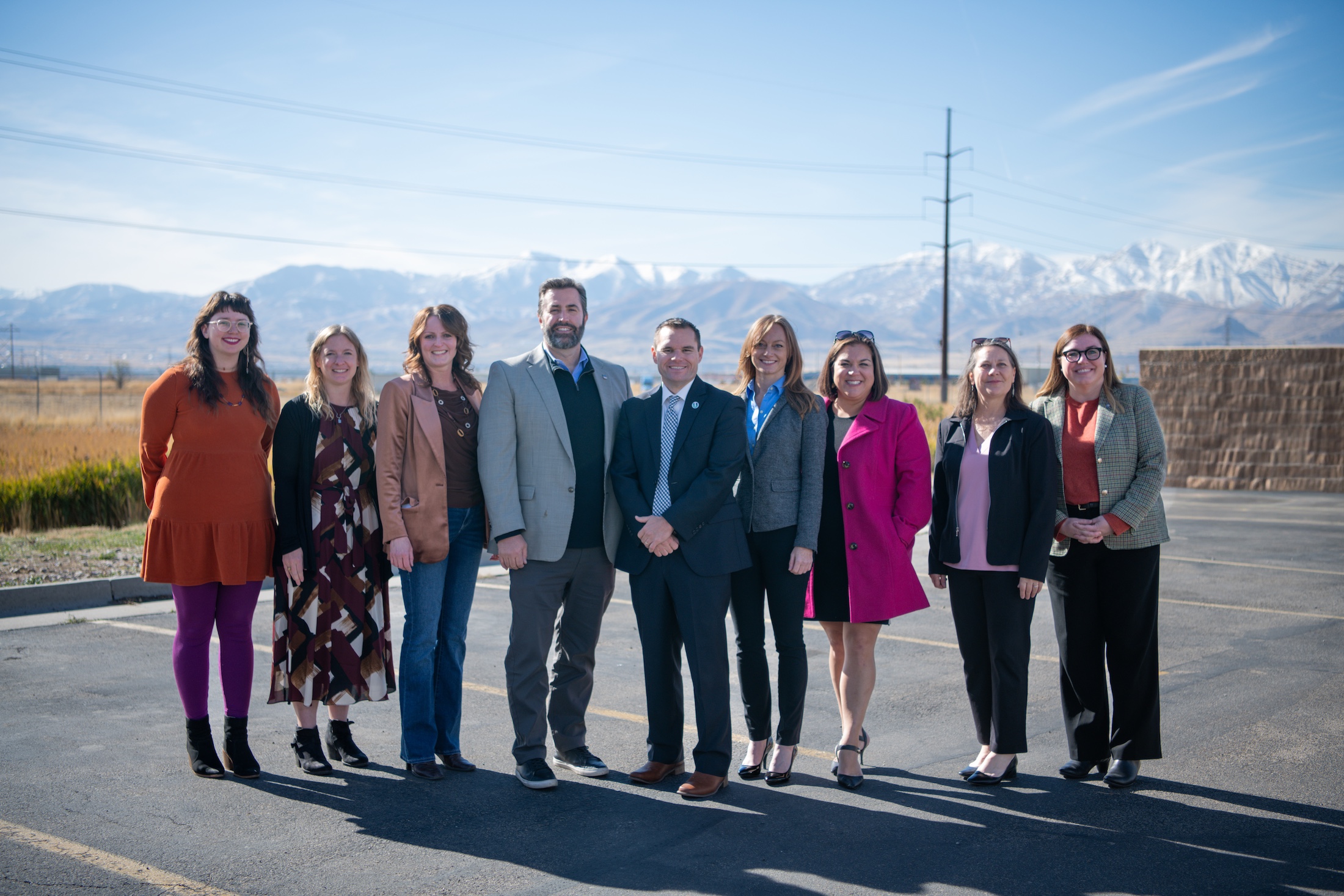Turning old logistics standards, into peace of mind.
From 2010 and into 2024, Utah has been one of the fastest growing states, enticing people with outdoor wonder, a booming job market, and beyond. As UIPA works to help support this growth, we are combining leading-edge green technology with advanced engineering processes, to reduce the environmental impact of logistics demands.
Our Commitment
For our critical mission to succeed, we must protect and preserve environmentally sensitive areas and critical natural resources, adapt to counter the effects of climate change, and minimize adverse impacts of development and freight logistics on Utah’s air quality, ecosystems, and majestic, natural spaces.
6 Pillars of the UIPA commitment to sustainability:
Respect
all areas existing natural environment, ecosystems and land use conditions
Collaborate
efforts of all stakeholders to maintain transparency and an open platform for discovery
Support
the continued growth of the state economy by collaborating with local businesses and bolstering community engagement
Incentivize
the adoption of green technologies in UIPA Project Areas
Improve
air quality and minimize resource use
Implement
leading-edge, state of the art, zero-emissions logistic solutions
An Introduction to the Northwest Quadrant Sustainability Action Study
As we balance logistics development, with sustainable strategies to mitigate resulting adverse environmental impacts, the Sustainability Action Study, which was conducted in the Northwest Quadrant project area, stands as the foundation for our vision, and how the outlined principles guide our process.

The purpose of the Study:
The purpose of the Study:
From legislation policies, guidelines, research, and management plans, and in collaboration with environmental engineers, economic directors, county commissioners, mayors and city councils, and additional state and regional councils in Salt Lake City and along the Wasatch Front, the fortified, SAS is focused on restoration, preservation, and management of important natural systems, while integrating human systems for mutual purpose and longevity.
The UIPA Sustainability Action Study Framework is Built Upon 3 Foundations:

Green
Carbon neutrality and net zero emissions are the aim of all development UIPA jurisdictional areas.
- Identify and preserve ecological zones surrounding jurisdictional areas and avoid and/or minimize negative environmental and health impacts.
- Prioritize port business partnerships with those willing to implement emissions reduction technologies.
- Obtain greenhouse gas analysis to help guide our decision making.

Resilient
All UIPA developments should be built to provide long-term infrastructure and support for social, economic, supply chain, and environmental events, while limiting negative, ecological impact on the natural environment and local communities.

Equitable
Communities affected by inland port area developments should
be intentionally consulted as part of planning processes to promote accessibility, economic opportunity, connectivity, health, safety, and an improved quality of life.
The UIPA Sustainability Action Study Strategies
As UIPA, its partners, and stakeholders, are paving the way in sustainable development, critical decision making is always in the balance. We have created a set of strategies to continually and thoroughly help guide us as we address concerns related to ecological impact.
The strategies of the Sustainability Action Study:

Air Quality & Energy Strategies
- Renewable charging/fueling infrastructure development
- Engagement with focus on infrastructure challenges
- UIPA Strategic Sustainability Plan
- EV adoption facilitation
- Future-proofing
- All-Electric building construction and adoption of robust energy-efficiency goals

Natural & Water Resources Strategies
- Storm water Management Plan and Storm water Pollution Prevention Plan Program based on Northwest Quadrant Storm water Master Plan considerations
- Phased development facilitation
- Building UIPA’s resource management role
- Enhancing existing conservation practices
- Incentivizing the location or expansion of low water using businesses and encouraging water conservation practices and usage reporting

Transportation Strategies
- Transportation Management Plan
- Partnerships with West Coast Ports
- Developing staff and agency capacity
- Creating a Sustainability Business Association

Land Use Strategies
- UIPA Master Plan
- Zoning reviews
- Development consolidation
- Onboarding incentives
- Coordinated planning processes
Our Wetlands Policy
The Utah Inland Port Authority (UIPA) is dedicated to preserving Utah’s wetlands, especially around the Great Salt Lake. Our wetlands policy focuses on:
-
Habitat Protection: Prioritizing conservation of ecosystems vital to wildlife and migratory birds.
-
Sustainable Development: Minimizing environmental impact by integrating eco-friendly practices and protecting water quality in project areas.
-
Water Management: Implementing efficient water use strategies to support wetland sustainability, especially in water-scarce areas.
-
Community Collaboration: Engaging with local communities and conservation groups to align projects with environmental needs.
Our wetlands policy underscores UIPA’s commitment to balancing economic growth with the preservation of Utah’s natural resources.

112.4 Million in EPA Funding to Power Zero-Emission Technology and Air Quality Initiatives at Salt Lake City Intermodal Terminal
UIPA & DEQ Secure Largest Environmental Grant
The Utah Inland Port Authority (UIPA) and the Utah Department of Environmental Quality (DEQ) have been awarded $112.4 million from the EPA’s Clean Ports Program to advance zero-emission (ZE) technology at the Salt Lake City Intermodal Terminal (SLCIT).
This funding includes $110 million for ZE equipment, like electric trucks and cargo handlers, and $2.4 million for air quality planning.
These upgrades will replace diesel equipment, improving air quality in Salt Lake City and aligning Utah’s logistics sector with environmental goals. The EPA’s Clean Ports Program supports ZE technology to reduce emissions and promote sustainable port operations across the U.S.
